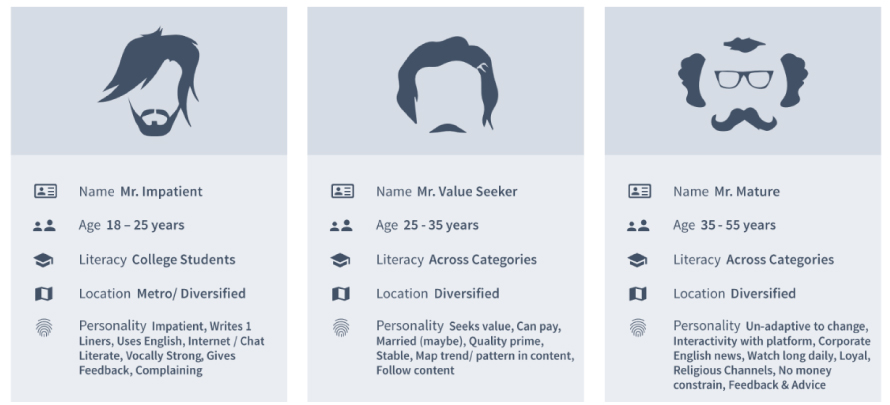All interactions that a person has with a brand, makes for the experience a customer relates to the brand with. In times when a customers’ journey is encompassing several touchpoints and interactions, with an ever-increasing demand for personalization across, customer behavioral data is becoming an asset to form a basis for gaining clear customer knowledge.
Hari Nallan & Mohita Jaiswal - March 2020

Conundrums of the modern-day CX designer
The modern customer journey is incredibly complex. The way to purchase typically involves many different touchpoints across multiple channels, over an extended period of time that can often span weeks, months or in some cases even years.
This complex, multi-touchpoint, multi-channel, time-spanning journey is also driven almost entirely by the individual customer, whose needs, motivations, values, and requirements can differ completely from those of the customer seemingly and demographically very similar to them; all of whom demand personalization.

How can behavioral data influence a data-driven CX design?
Research shares that customer behavioral insights are aiding organizations to outperform peers by 85 percent in sales growth and more than 25 percent in gross margin*. There are many ways how behavioral data and its analysis can contribute to adding greater value to the customer’s experience across their digital journey.
1. Segment behavioral data as a starting point
The success of every point of customer interaction in a customers’ journey can be measured through significant KPIs (for example for Google search interface a click on the search button denotes a positive customer engagement)
When customer behavior patterns that impact important KPIs are identified, one can isolate common behavioral characteristics associated with customers that exhibit those patterns. Customers can then be classified into groups (behavioral segments) to gauge the potential business impact and determine the best engagement strategy for each group.
Some questions to ask would be:
- Which customer behaviors impact important KPIs?
- What segment of users shows that customer behavior?
- What is the best engagement strategy for both in-group and out-group?
2. Create a CX optimal for acquisition and conversion
- Optimize the path to purchase through personalization: Messages and offers for key customer segments should be aligned with their most crucial purchase decision drivers, which can increase conversions and lead to successful interaction points on customers’ path to purchase.
- Clone your high-value customers: Creating behavioral segments of most profitable customers can help in targeting and acquiring more customers that exhibit similar behavior, and that are most likely to follow in their footsteps across the path to purchase.
- Discover opportunities to upsell: Investing in customer journey analytics can help in understanding customers’ cross-channel behavior and identifying leading indicators of customers who are more likely to convert on an upsell offer.
3. Retain – By knowing what is not working and acting in time
Businesses cannot rely on customers to raise a red flag as they experience a platform, in order to accurately gauge customer satisfaction or to predict churn and retention. This happens as 91%* of those unhappy non-complainers simply leave.
- Spot troublespots in behavior early: To see what is working and what is not, funnel analysis is a great way to recognize user drop off. For example, you could explore users who create an account, but then never go on to visit your page. Red flags as shown through a customer’s behavior of non-engagement, when detected well in time, can be acted upon strategically to optimize ineffectual parts of a product/service.
4. Build a CX focused on engagement and growth
Businesses cannot rely on customers to proactively let them know when it’s a good time to sell them something. Individual customers might not know that you have something they want, and often don’t even know exactly what it is they want themselves, creating an onus on the platform to enable that discovery.
- Diagnose and remove friction-heavy steps for customers: Behavioral data on tasks which users have not completed or left in between, can indicate possible areas of friction which need a rehaul. Designing for higher engagement would also mean providing slow incremental goals over a longer amount of time, highlighting what will be lost by not acting immediately, to motivate users at various touchpoints in their journey.
- Pausing to check for customer satisfaction: Through behavioral data, a customer who has encountered negative experiences recently can be identified and moved to a low-satisfaction customer segment which can be temporarily suppressed from receiving certain promotional offers. This way, they can be targeted with other retention-focused initiatives to gain back their favor and increase their satisfaction.
Can a great CX change human behavior?
Understanding and analyzing customer behavior data can be a key to guide a seamless and positive customer experience. However, not all segments of users would appropriate behavior which corresponds to a valuable KPI. The key would be to model out a customer experience which then builds motivation, is simple to use and persuades customers with the right trigger to get the desired behavioral outcomes.
Source: Fogg Behavior Model, BJ Fogg




